Homemade solitary Bee Hotels are Necessary. Solitary bees like bumblebees and carpenter bees need place to breed so a bee hotel will help.
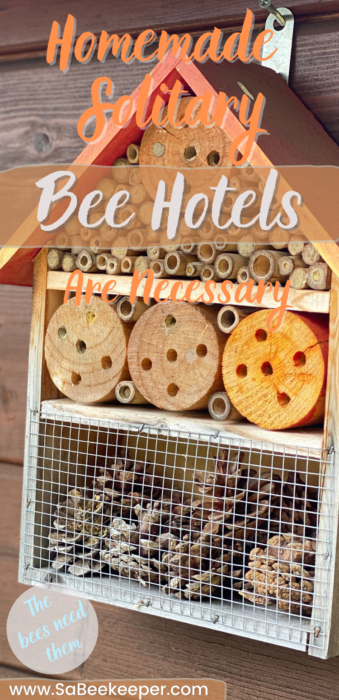
Homemade Solitary Bee Hotels.
Bee hotels replicate their nesting habitat and aid in boosting declining pollinator populations of bee species.
Why should you put up a bee hotel?
Solitary bees include mason bees, leafcutter bees and carder bees, bumblebees and carpenter bees. Other tiny sweat bees and native bees in your country.
There are so many native and solitary bees around you would be astounded.
They are all very valuable pollinators. Honey bees live and breed in a bee hive where as these solitary bees, need to make nesting cells in tubes or dig holes in old wooden tree stumps or reeds as well as old plant stems. Some make nesting cells in old mud bricks and some in the dry soil or dry piles of grass.
Therefore to make a bee hotel where these bees will make their homes will be a good idea. They are not like honey bees that need a colony, they don’t mind nesting next to each other but do not need each other like a honey bee.
What do you make a bee hotel out of?
Firstly do not use treated wood as the bees will avoid them as they have chemicals in the wood and would deter the bees.
Older weathered soft wood, like cut off tree stumps would be fine.
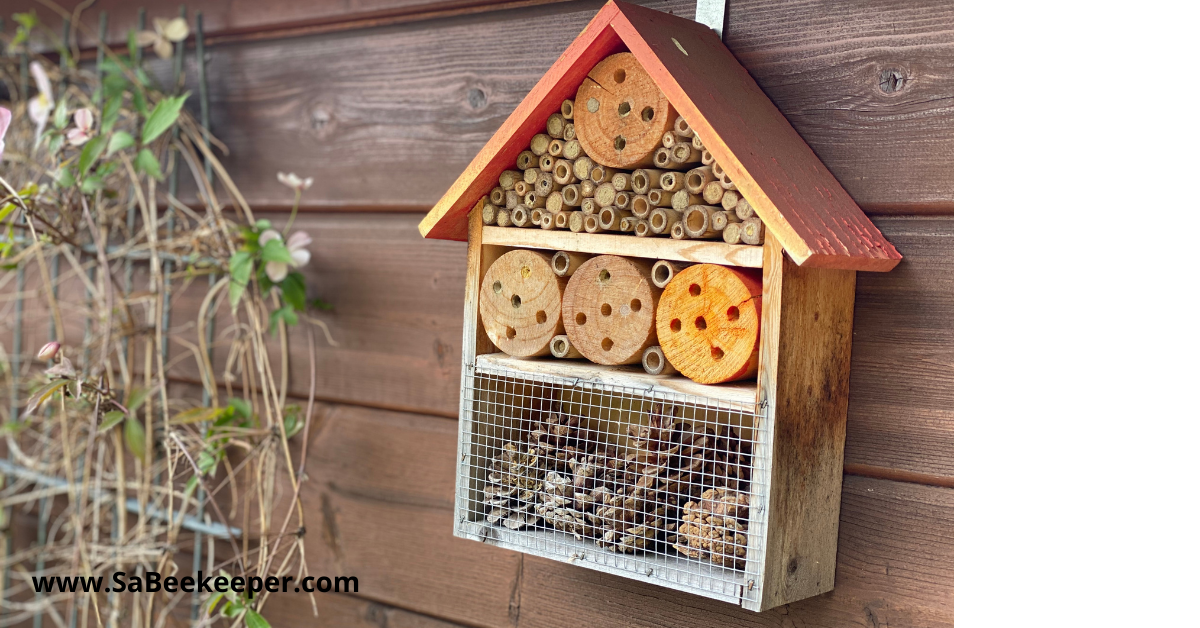
Make exterior wall to hold the different pieces of reed or cane or wood blocks and brick or any other usable material you would fill the hotel with.
Build it as big as you want, any shape would do as the bees are not fussy. Its easier to build one that would suite the place you will erect them. Hanging from a roof beam next to a wall would be good. The ants would not get them up there.
That’s the other problem you would have with making a bee hotel with all sorts of materials. Other bugs like ants robbing the bee hotel.
Where is the best place to put a bee hotel?
You need the bee hotel to face the rising sun and be kept dry and at least a foot or more of the ground if you making a extra large one.
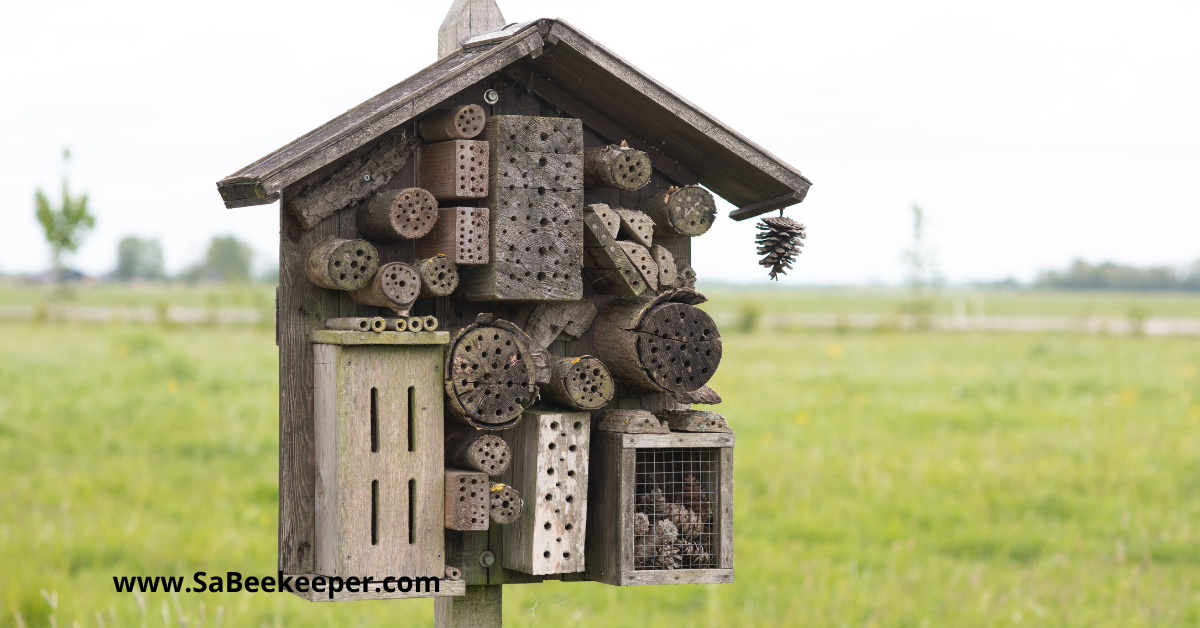
Place them around your farm or property where ever you think is a good place. Its a good idea to rather make a few medium size bee hotel and place them in different locations.
How do you make a bee hotel?
An easy size to construct would be one the size of a bird house. Rectangular as well. Don’t make it difficult.
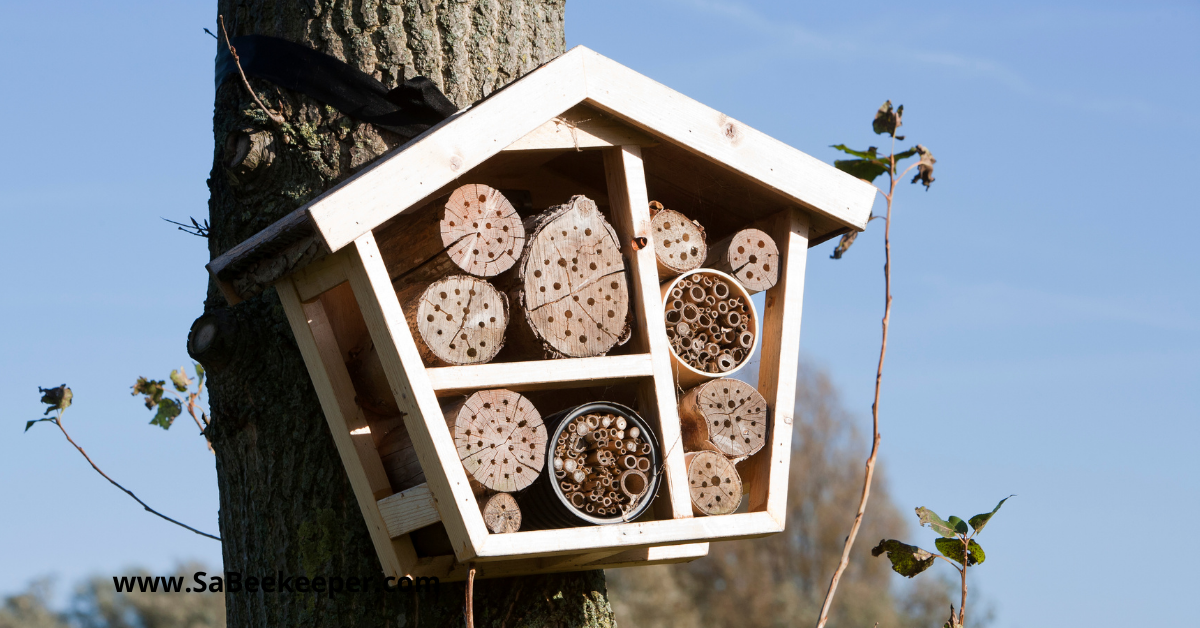
The only real need would be to have it at least 8 inches deep, so it allows the bees to lay a number of cells in the reed.
The rear of the bee hotel should be enclosed with some plyboard and the front open. Like a house the roof must be shaped that the rain may run off and at least be a few inches over the front to it does not get wet.
Wood can be used for the “roof” or a piece of corrugated metal roofing.
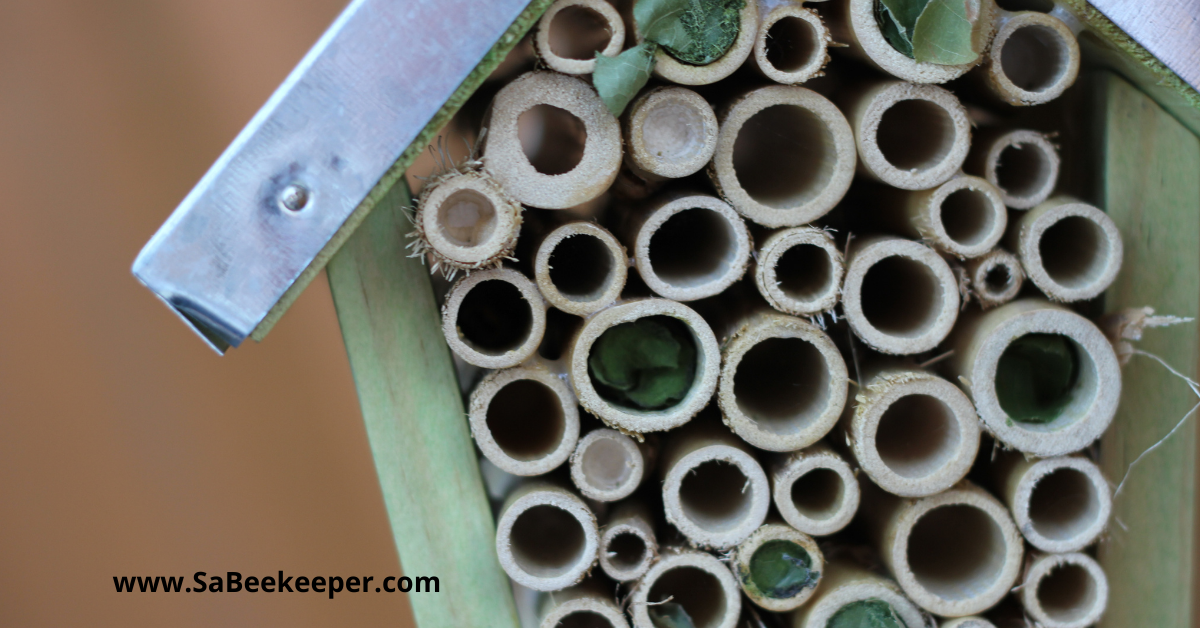
In the photo above you can clearly see some leafcutter bees are making a nest with pieces of leaves in some of the tubes. ( view how a red leafcutter bee made a nest in a lavender plant) A video of this red leafcutter bee making her nest.
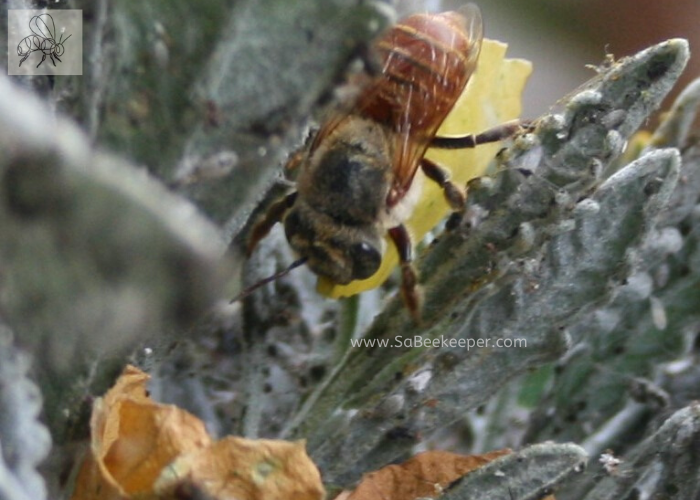
You can leave the frame unfinished or coat it with non chemical sealant or paint. Or just raw lynseed oils. Even the wax oils used for honey bee hives would be good.
If you use materials that contain chemicals then the bees will not come to the hotel. Left for a few weeks to dry and the smell to leave the wood, would be a better option.
Filling the bee hotel with “rooms”
The hotel “rooms” are nothing more than holes drilled into blocks of wood. You can use random scraps of soft lumber or even small logs cut from tree branches. Whatever materials you use, they should all be cut to the same length, which is determined by the depth of the frame (a minimum of 6 inches to 8 inches).
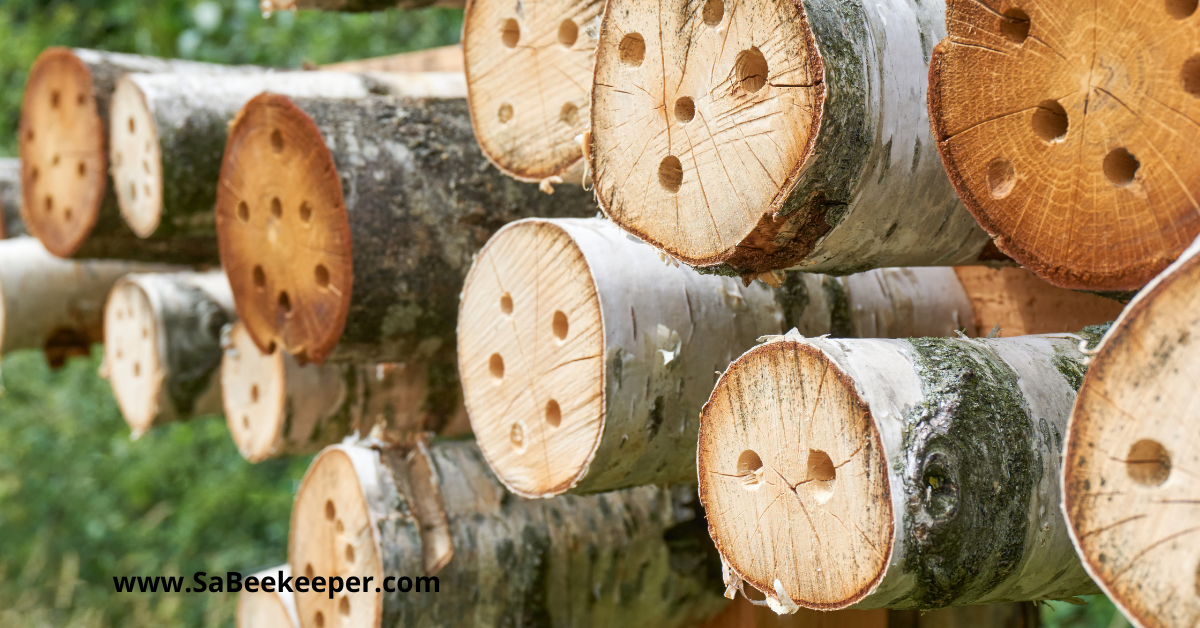
Native or solitary bees vary greatly in size, the bigger the bee, the larger the diameter and greater depth they require for their nest hole. Drill holes ranging from 1/8” to ½” in diameter into the end of each block or log, spacing them about ½” to ¾” apart.
Holes larger than ¼” should be 5” to 6” deep, while holes ¼” or smaller should be 3” to 5” deep. Make as many hole-filled blocks as will fit in the frame, and then smooth out the openings with sandpaper to remove any sharp splinters left by the drill.
You may also fill portions of the frame with small-diameter pieces of bamboo, hollow reeds, or plastic tubing cut to the same length as the wooden blocks.
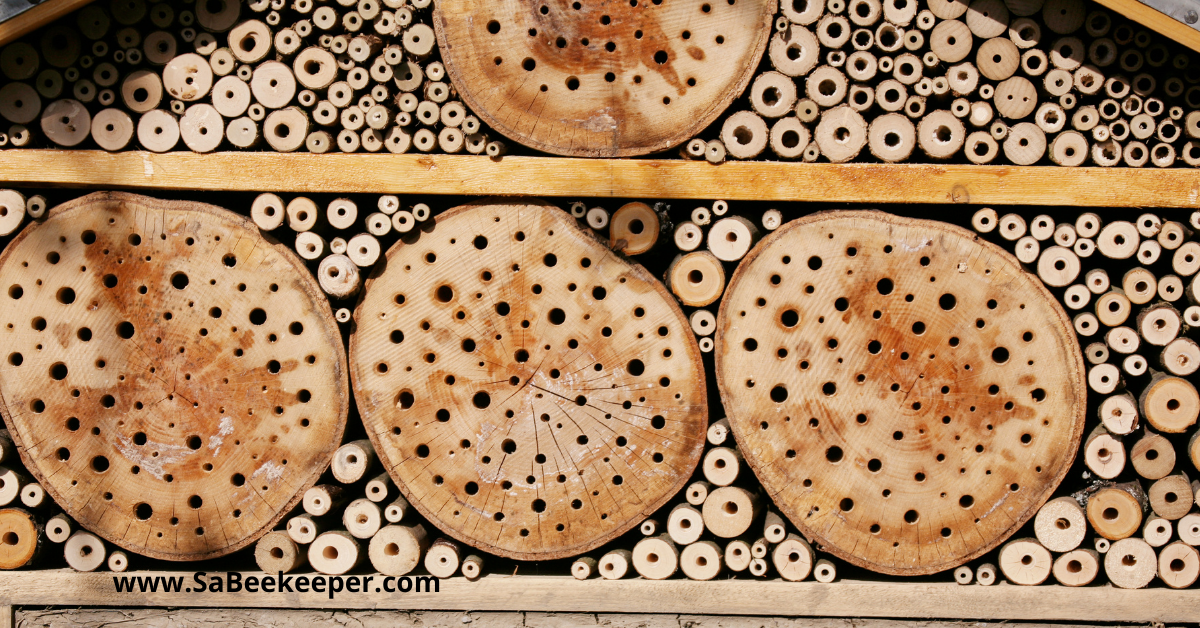
Carpenter bees or any other larger bees will dig the holes to the size they like with their sharp nippers. So if the holes don’t fit and they like them and are happy they will alter them.
A photo of a carpenter bee making her nest, view its life cycle.
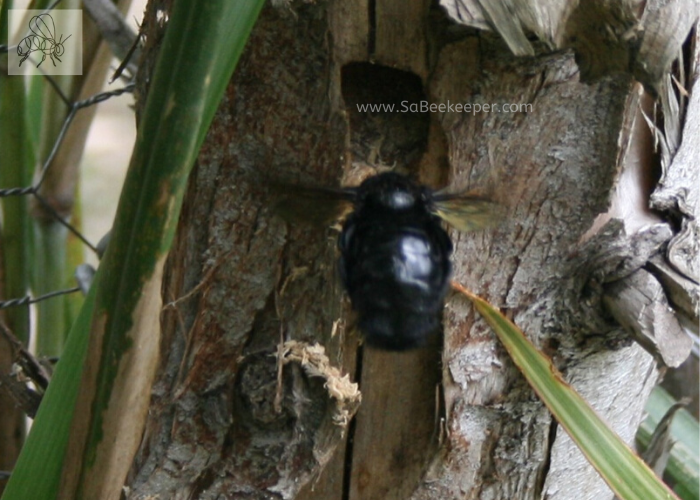
Mounting the bee hotel.
It should be off the ground and facing at least east south east so it warms up earlier in spring and stays warm later in fall. In this way it would extend the egg-laying season for the young bees.
Stack the blocks, bamboo and any other bee rooms you’ve created inside the frame with the hole openings facing out.
Female bees will construct individual chambers and cells throughout each hole with mud, chewed up plant material and other substances, depending on the bee species.
What they fill the cells with.
A single egg is deposited in each chamber, along with a bit of pollen for the young bees to eat after they hatch. Once a tube is filled, it will be sealed off at the opening to prevent moisture and predatory insects from entering.
The hatched bees remain inside the sealed tubes through the winter, In a cocoon. Emerging as adults in spring when warm weather returns.
Read all about these bee species life cycles. Every one of theses bee species needs a “Bee Hotel”.
A black Bumblebee on sunflowers Life cycle)
The nest building Red leafcutter bee (plus a dark leafcutter bee)
How to live with sweat bees (their life cycle)
Metallic green sweat bee and dark sweat bees
Life of a blue mason bee species
Glistening Green Orchard Bee(life cycle)
Yellow striped tail bumble bee (these have holes in mud like bricks, see below)
All these bee species and more are found in Ecuador, south america.
See my gallery of photos.
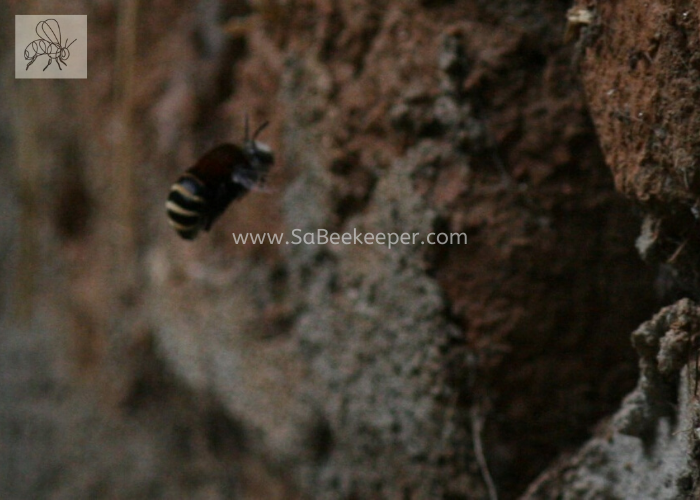
Bees will naturally be attracted to these bee hotels.
The bees rarely return to old used chambers and holes.
After all the sealed openings have been broken by the exiting bees, bee experts recommend removing the old “rooms” and building a new set each year as a precaution against transmitting diseases from one generation to the next.
Happy building as these bees are all very important pollinators.
Purchase these items online for your bee business and bee hotels.
This post may contain affiliate links, where we earn from qualifying purchases.
We are taking your advice and instructions here and building a primitive bee hotel in an open area in middle of Blue Ridge Mts in Georgia. We planted natives for pollinators past fall, have seeds stratifying in the winter, and will plant native wildflowers in the spring. Thank you for the information and good luck and best wishes and thank you to everyone helping the bees!